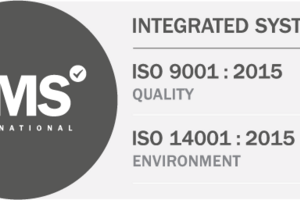19 July 2016
Emergency lighting maintenance regulations: Top 5 issues to watch
Nowadays, most in the lighting sector understand failing to comply with emergency lighting regulations compromises staff safety, and risks substantial fines or imprisonment.
Nonetheless, an overview of exactly how and why firms run into trouble is essential. But what are the Top 5 ways companies take risks through non-compliance?
1. Failing to carry out and document risk assessments
It should be plain that carrying out regular risk assessments is essential. Have you enough lights, correctly sited, that will provide the right illumination in an emergency? Has your site changed recently? Have staffing numbers grown?
Failing to document a fire risk assessment that includes emergency lighting could also lead to legal trouble, and it’s necessary to keep records of issues you have tested. Authorities including fire authorities have the right to see these.
2. Failing to comply with current standards for emergency lighting installations
Though it might seem obvious, you must know what the most recent standards are, and equally obviously it’s your responsibility to meet them.
‘The British Standard provides the emergency lighting designer with clear guidelines to work to,’ writes Firesafe. ‘BS 5266-1: 2011 embraces residential hotels, clubs, hospitals, nursing homes, schools and colleges, licensed premises, offices, museums, shops, multi-storey dwellings, etc.
‘Although this standard recommends the types and durations of emergency lighting systems relating to each category of premises, it should be remembered that the standards are the minimum safe standards for these types of building and that a higher standard may be required for a particular installation.’
3. Failing to comply with current standards for emergency lighting products
A very similar issue to overall standards concerns bespoke standards your actual products and kit must meet. Just as an airliner must meet overarching safety regs, its engines too must meet the law. The logic is identical; find the latest rules, check you comply, check your kit is fit for purpose.
4. Failing to comply with current standards for testing emergency lighting
‘Without light even a familiar environment becomes more dangerous and more frightening, so it is essential not only that the emergency lighting comes on when needed but also stays on for the required duration,’ writes Lux magazine.
What’s the best way to check that lighting work as and when needed? Regular, standardised and comprehensive emergency light testing. This should ideally take place alongside planned lighting maintenance.
5. Failing to rearrange emergency lighting after a building refurbishment
In many scenarios, shelves or racking could have been relocated, meaning that now the emergency lighting doesn’t provide the required light levels along the exit route. It’s another simple error but one that could be costly in terms of both lives and prosecutions.
Get your site to standard; now
“Our general message is that although trying to understanding the current requirements can be baffling, and an additional burden for busy Facilities Managers, Greenlite can take care of all an organisation’s emergency lighting needs,” says Bob Hall, Greenlite Managing Director.
“We can schedule emergency lighting maintenance services that will ensure you are compliant. We can fit brand new, safer, sustainable light on your site while we do this.”
The message is; you simply can’t skimp on emergency lighting. Get your site and product fit for purpose today.



